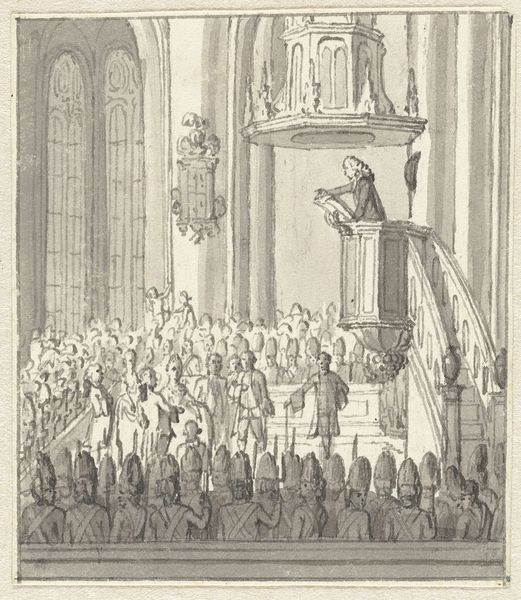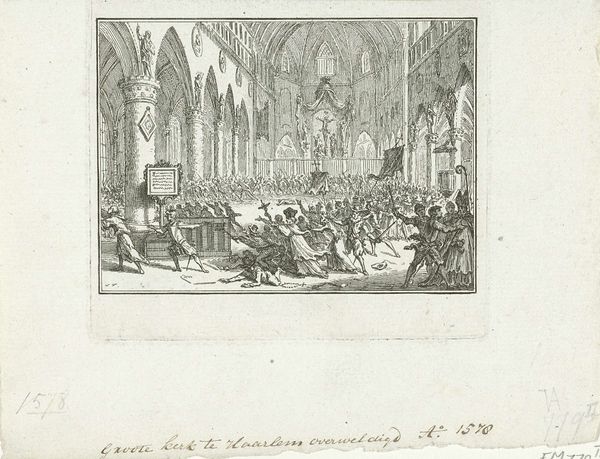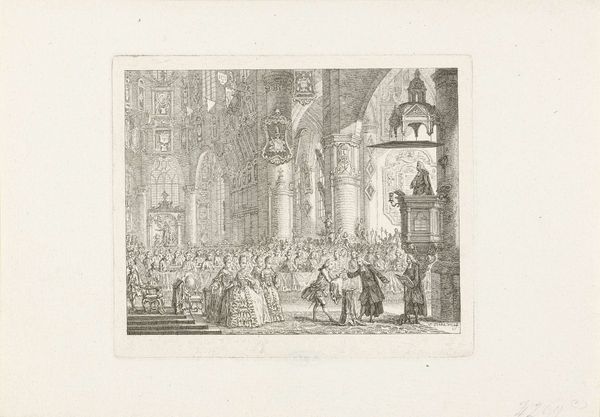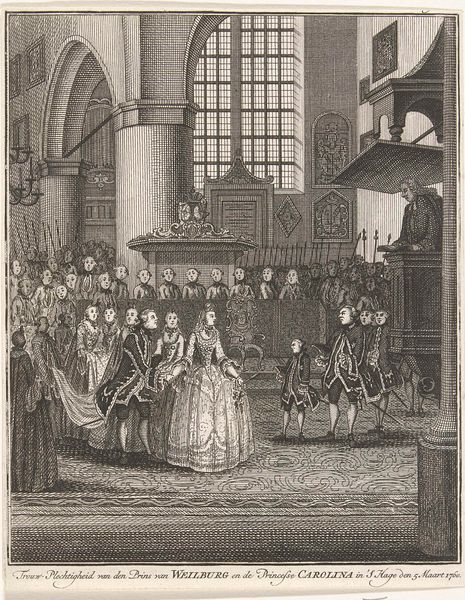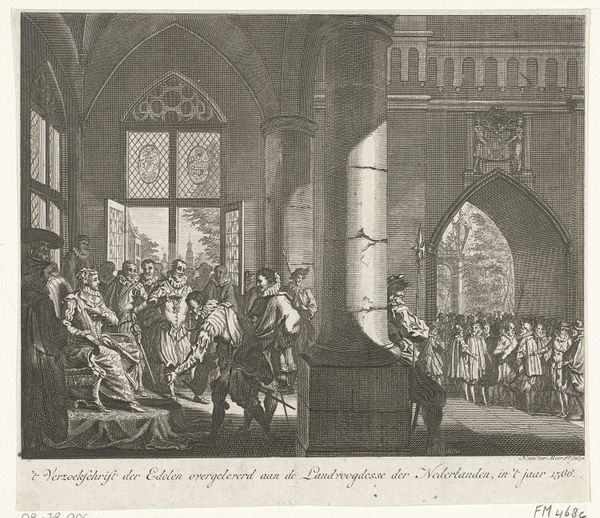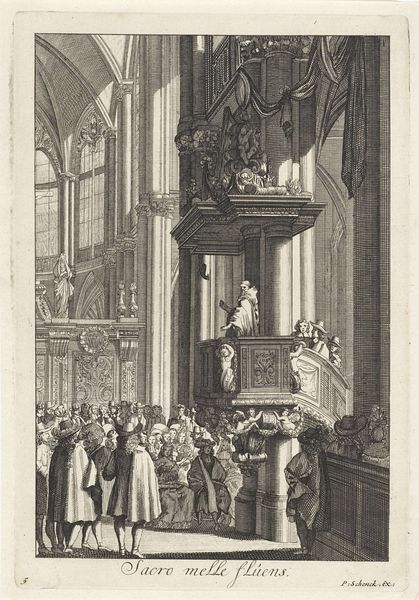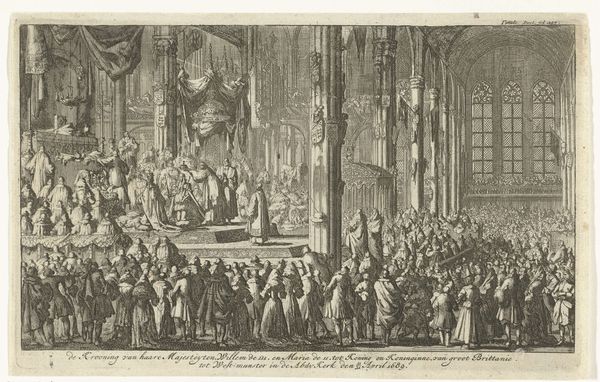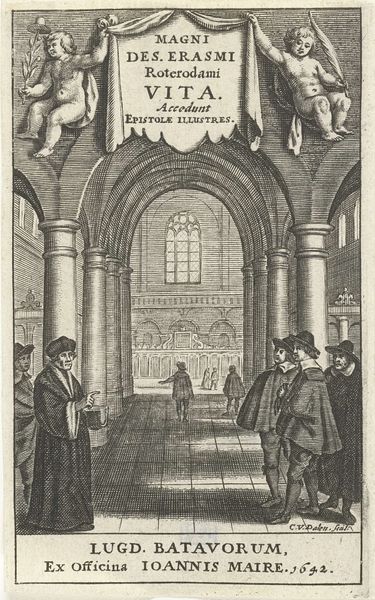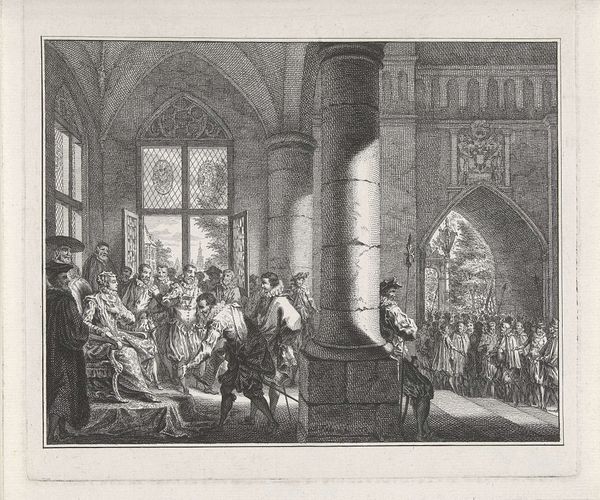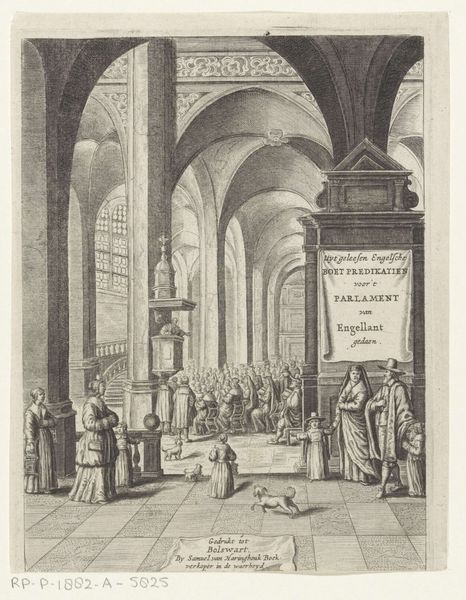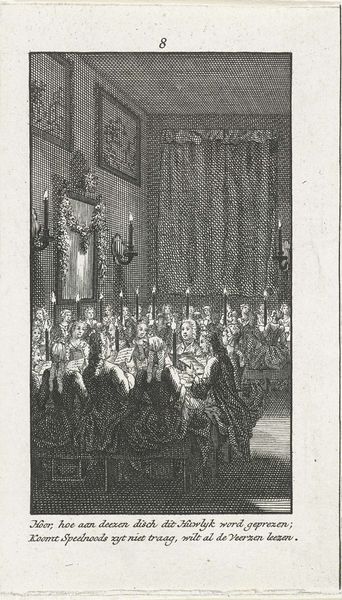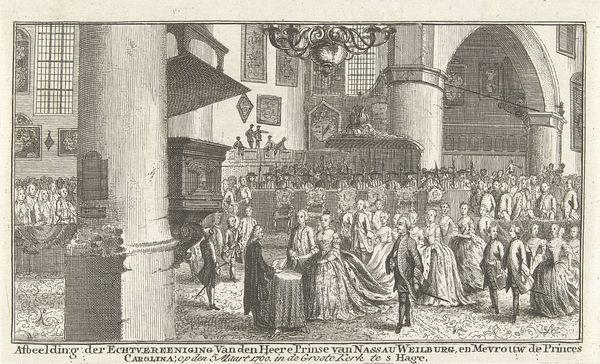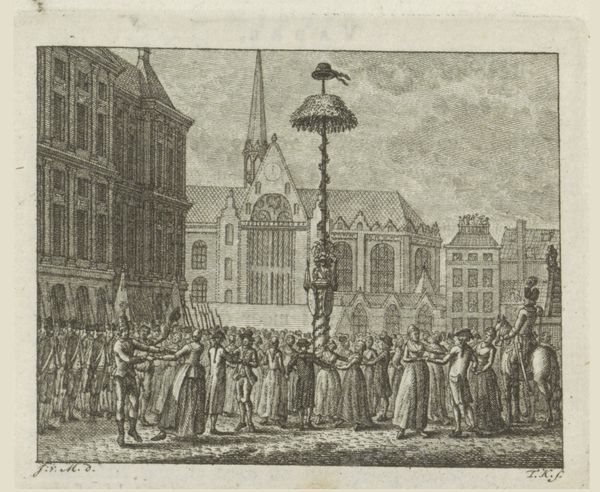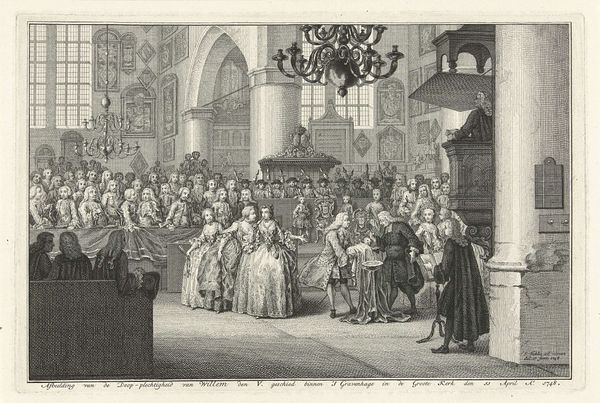
Dimensions: height 123 mm, width 151 mm, height 45 mm, width 151 mm
Copyright: Rijks Museum: Open Domain
Editor: This print, made by Simon Fokke in 1774, is an engraving depicting “The Baptism of Prince William George Frederick.” It's fascinating how much detail Fokke packed into this relatively small image. It feels almost like a stage production. What grabs you when you look at it? Curator: For me, it's about the materiality of power being displayed. Consider the physical act of engraving—the labor, the deliberate marks, the production of multiple copies. This wasn't just a visual representation; it was a crafted object designed for dissemination. We're seeing not just the baptism, but the *manufactured* image of it, meant to solidify the Prince's place within a specific socio-political landscape. Editor: So, you’re saying the very act of making this print contributes to the construction of royal authority? Curator: Precisely. The baroque style with its dramatic composition serves the propaganda purpose, but look at the engraver, Fokke. Who was he? How was his labor compensated? The materials, the ink, the paper...these are all material components that made this spectacle tangible. Every copy that circulated reinforced the social hierarchy, subtly prompting discussions on class and wealth. Editor: That makes me see it in a totally new way. I was focused on the event itself, but now I’m thinking about all the hands that touched this image and how that affected its meaning. Curator: Exactly. Even the choice of engraving as a medium speaks volumes. It's reproducible, allowing for widespread distribution. Each impression becomes a tiny act of reinforcement for the established social order. So, in essence we can question where high art starts and commerce or manufacturing begins. Editor: That's given me a lot to think about. Thanks for expanding my view. Curator: And you've helped me see the limitations of a purely materialist approach. The artistry in Fokke's rendering of light and shadow certainly adds a layer of complexity to its function as propaganda.
Comments
No comments
Be the first to comment and join the conversation on the ultimate creative platform.
